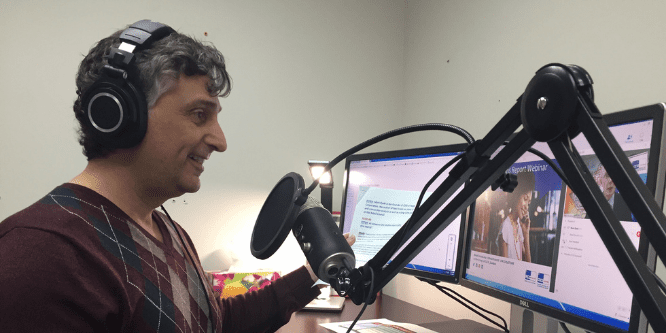 Declining store traffic is often cited as the key reason why sales are down, but retail analytics expert and two-time author, Mark Ryski has a different take on it.
Declining store traffic is often cited as the key reason why sales are down, but retail analytics expert and two-time author, Mark Ryski has a different take on it.
He says, retailers often don’t have a traffic problem, they have a shopper conversion problem. And he has the data to prove it.
Listen to the Podcast hosted by Judy Mottl , editor of Retail Customer Experience.
Every retailer must be able to answer two questions:
(1) how many people visited the store?
(2) what percentage of the visitors made a purchase? Sales data captured by your POS system is vital data, but it only tells us about the sales outcomes and nothing about how the outcomes were generated. Retailers that run their stores using sales transaction counts to guide them have two serious operational blind spots – store traffic and shopper conversion insights eliminate them.
- Brick-and mortar-stores have a significant shopper conversion advantage over online retailers. This is a key strength of brick-and-mortar retailing – play to your strength. Remember: every shopper who crosses the threshold of your store has a high probability of being converted into a customer.
- If you want to get people to buy more, you need to understand why they don’t buy in the first place. Conduct simple exit surveys of non-buyers to understand purchase intent and to identify drivers of non-purchase. So much of conversion rate optimization is about executing the basics – having actual shopper insights to inform actions is critical.
- One of the biggest benefits of having store traffic data is to schedule store labor effectively. Tracking store visits by the hour enables retailers to perfectly align their staff resources to when people are visiting their store. Sales transaction counts are not a ‘good enough’ proxy for store traffic. To avoid under/over staffing, schedules should be driven by store traffic activity, not POS transaction counts.
- Shopper conversion measures store experience. Measuring “store experience” is another important area that store traffic can help with. If shopper conversion rates are low or sagging on certain days or day-parts, it means people are visiting but not buying – a telltale sign the store has an experience issue. Conversion rate sags show you where to look.
- Store traffic and shopper conversion provide powerful insights into true store performance that sales results alone cannot. Store performance is largely determined by sales results, but a sales-only view can mask the true performance of a store. By breaking sales results into the underlying sales drivers of store traffic, shopper conversion and average sale, the retailer will gain deeper insights into how stores are performing and better understand what they need to do to improve sales.
- Every retailer can improve conversion rates and deliver better financial results by focusing on the shoppers already in their stores. Conversion Rate Optimization is proven but largely untapped by the vast majority of brick-and-mortar retailers. In a retail world of systemic store visitation declines, CRO has never been more important – start now.